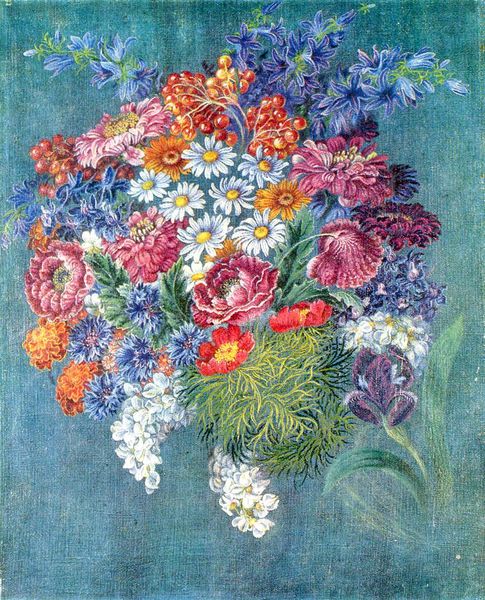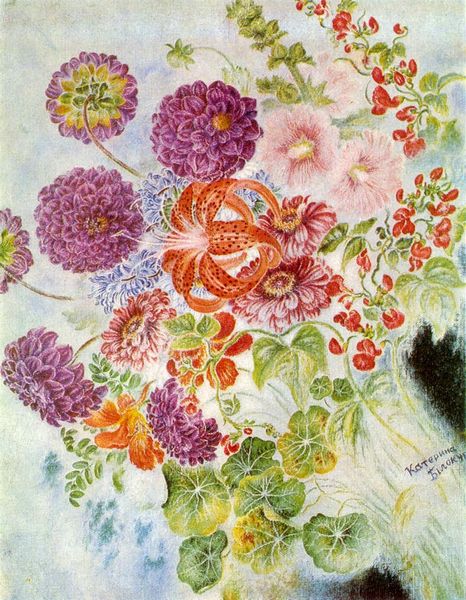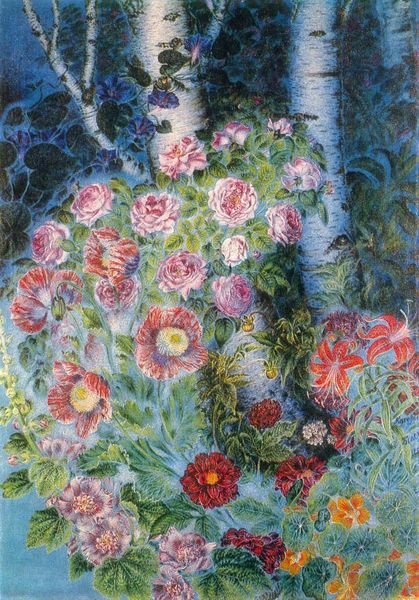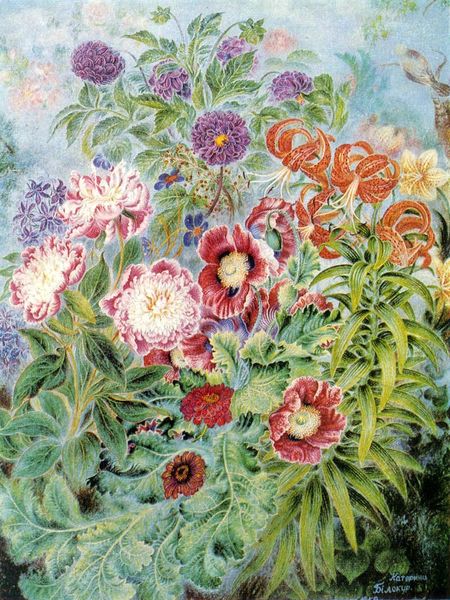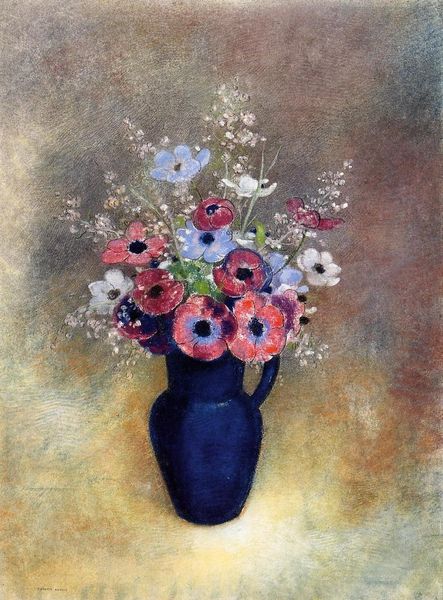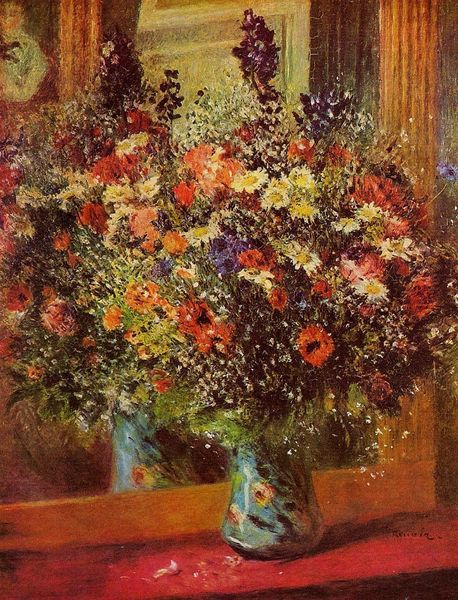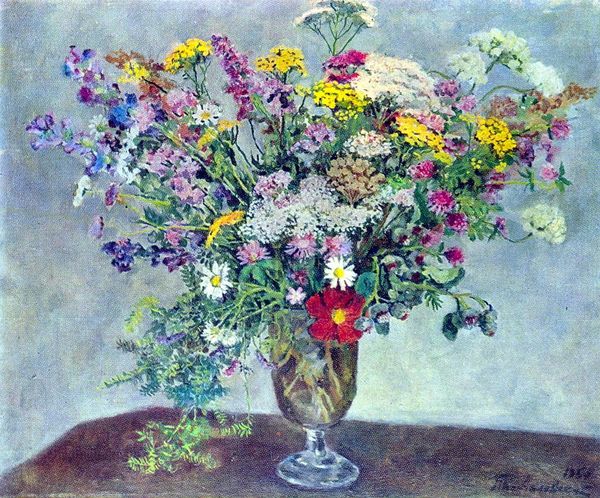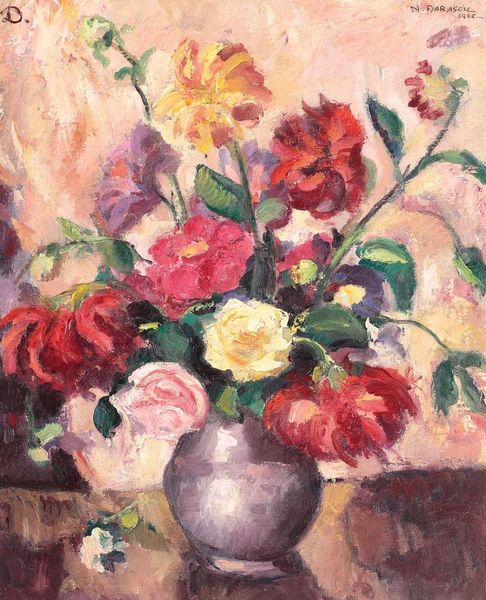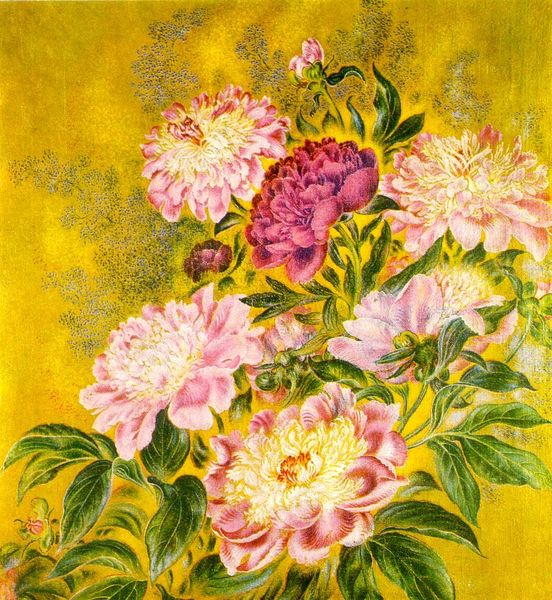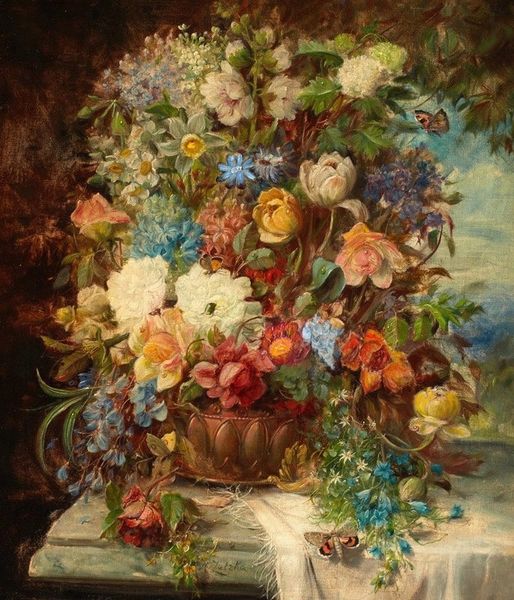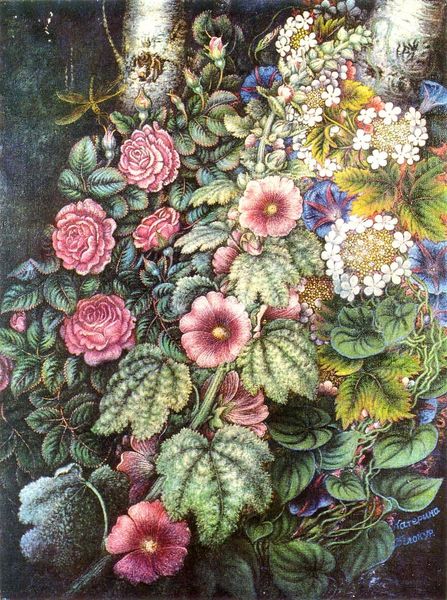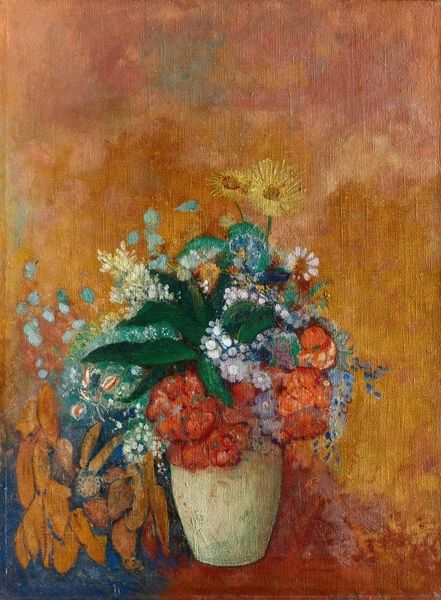
painting, oil-paint
#
painting
#
oil-paint
#
realism
Copyright: Kateryna Bilokur,Fair Use
Editor: Kateryna Bilokur’s "Bouquet of Flowers," painted in 1954, presents us with a vividly rendered bunch of blossoms in oil on canvas. I’m immediately struck by the detail—it feels both lush and almost dreamlike. What symbolic meaning do you find within the arrangement of these particular flowers? Curator: A deceptively simple question! Flowers are, of course, often symbols of ephemerality and beauty, but also of resilience. Look closely. Does anything about this specific combination strike you? Editor: Well, there's a wide variety… from what looks like poppies and morning glories to hollyhocks, all in one bouquet. They're not typically in bloom at the same time. Curator: Exactly. What could that imply about the artist’s intentions? Perhaps Bilokur is using the bouquet to capture a sense of timelessness? This image moves beyond a fleeting moment and becomes a celebration of the cyclical nature of life. This isn’t a still life painting but an iconographic arrangement, where each element contributes to a bigger statement about time, memory, and continuity. She may be creating a personal statement that incorporates visual culture that’s particular to the artist’s world. How does that realization change your perspective? Editor: I see it now. It’s less about realism and more about building meaning. The bouquet as a whole becomes a symbol itself. It's not just representing the image of a beautiful object; it speaks about resilience and strength. It’s almost…a personal emblem? Curator: Precisely. Bilokur elevates what might seem like a conventional subject to the realm of personal iconography. This close reading demonstrates the complex ways visual symbols connect individual experience to cultural memory.
Comments
No comments
Be the first to comment and join the conversation on the ultimate creative platform.
